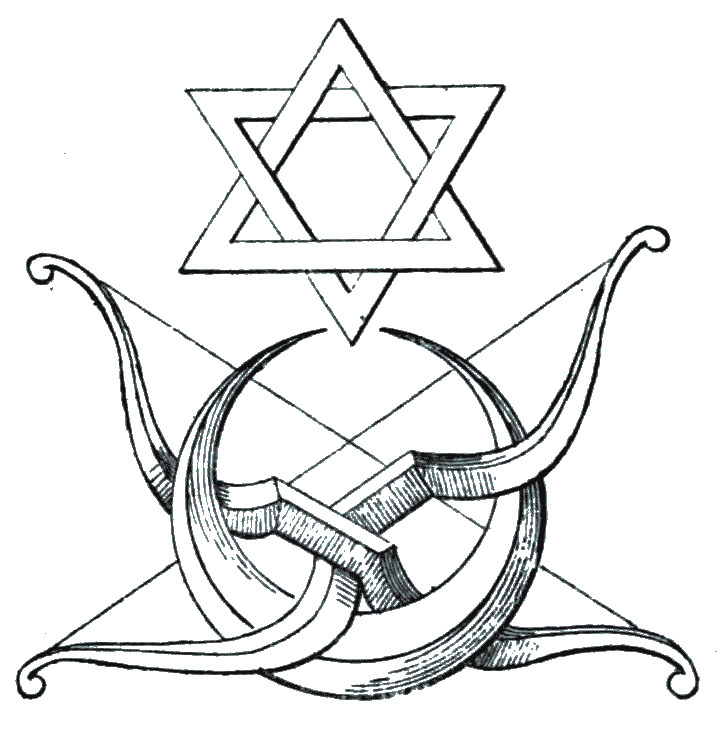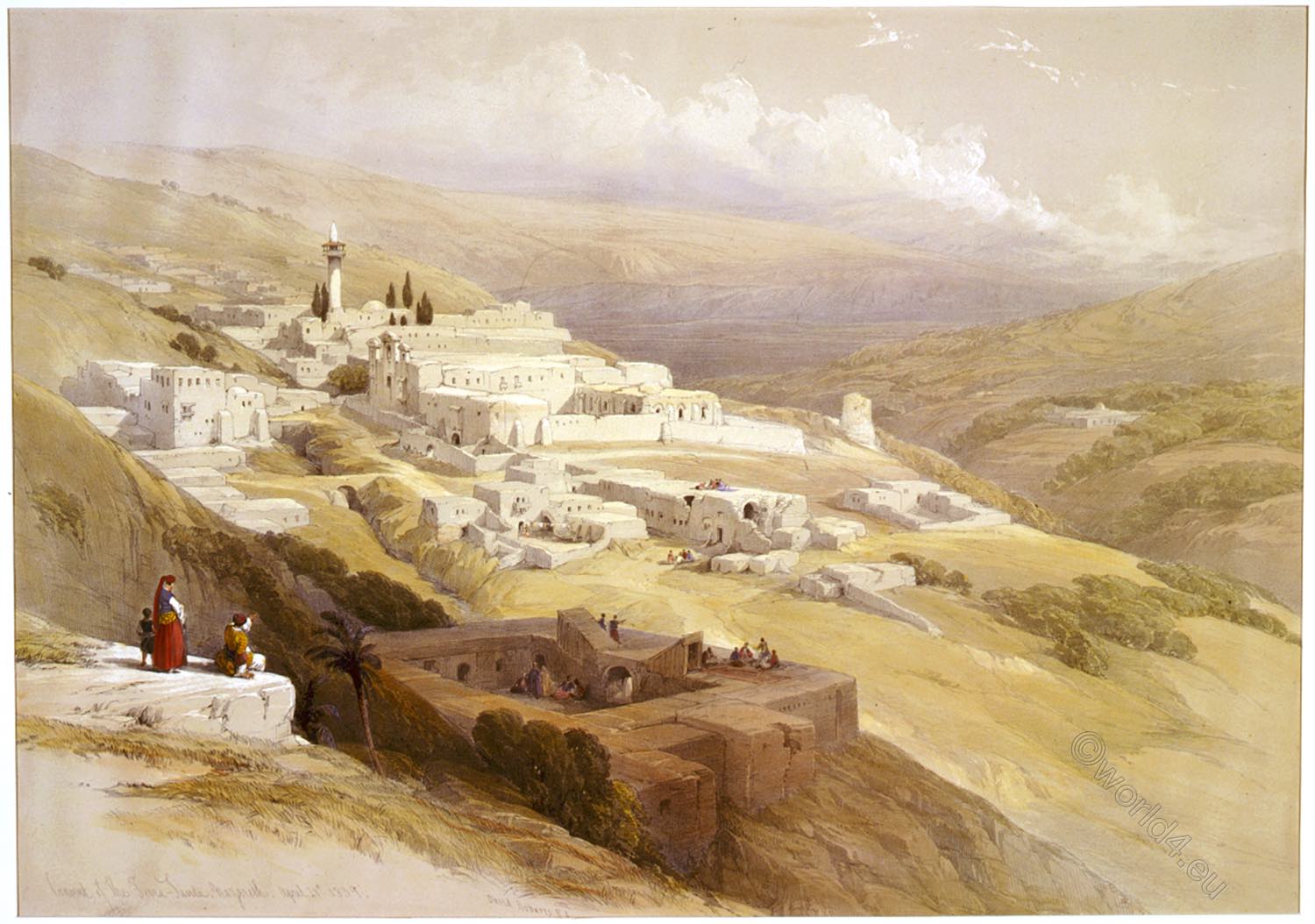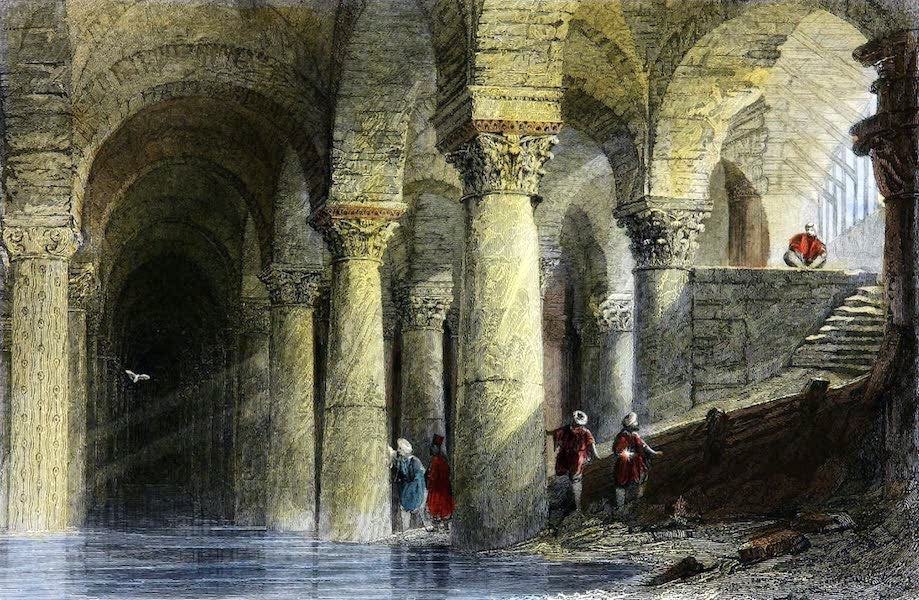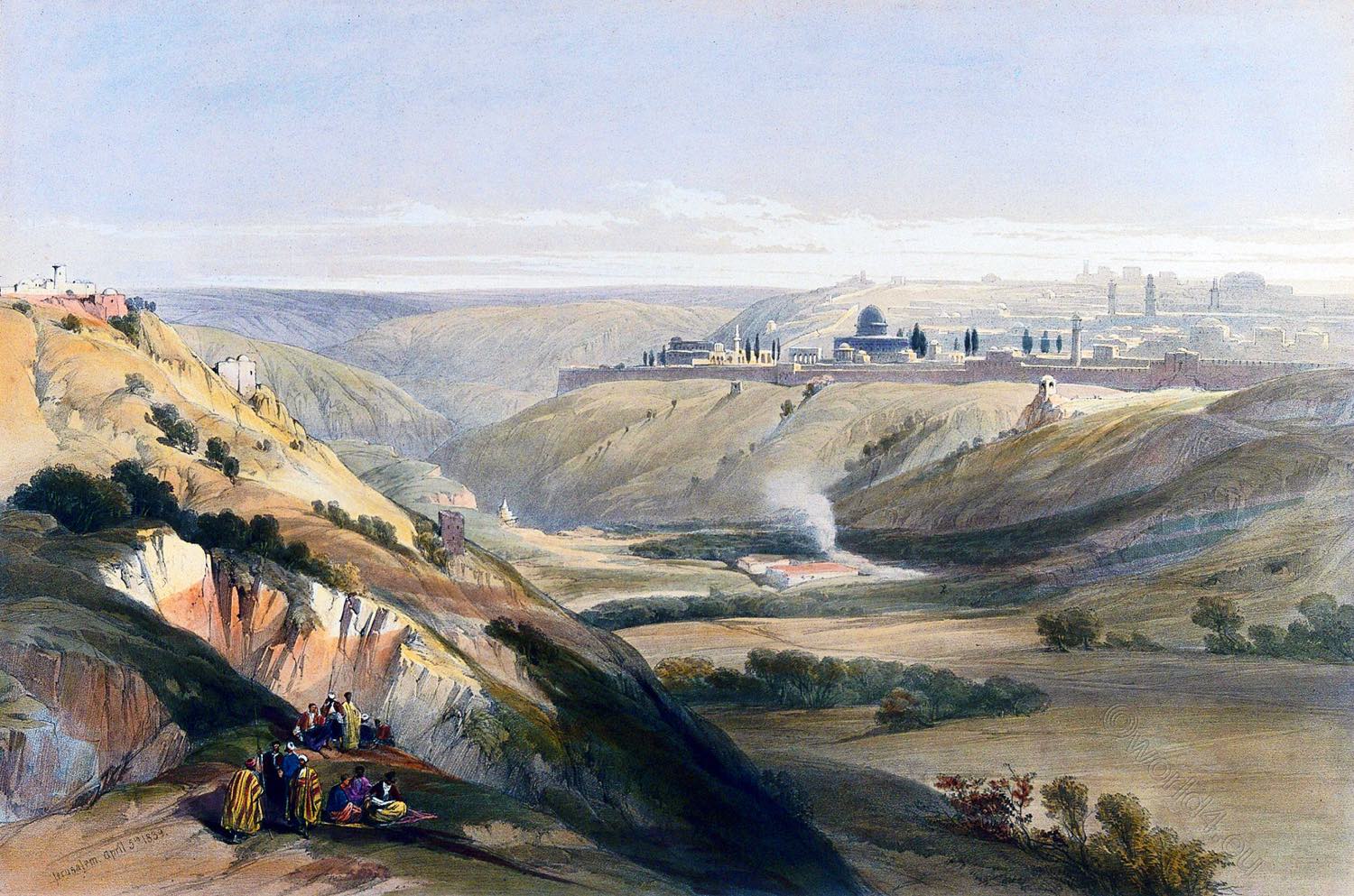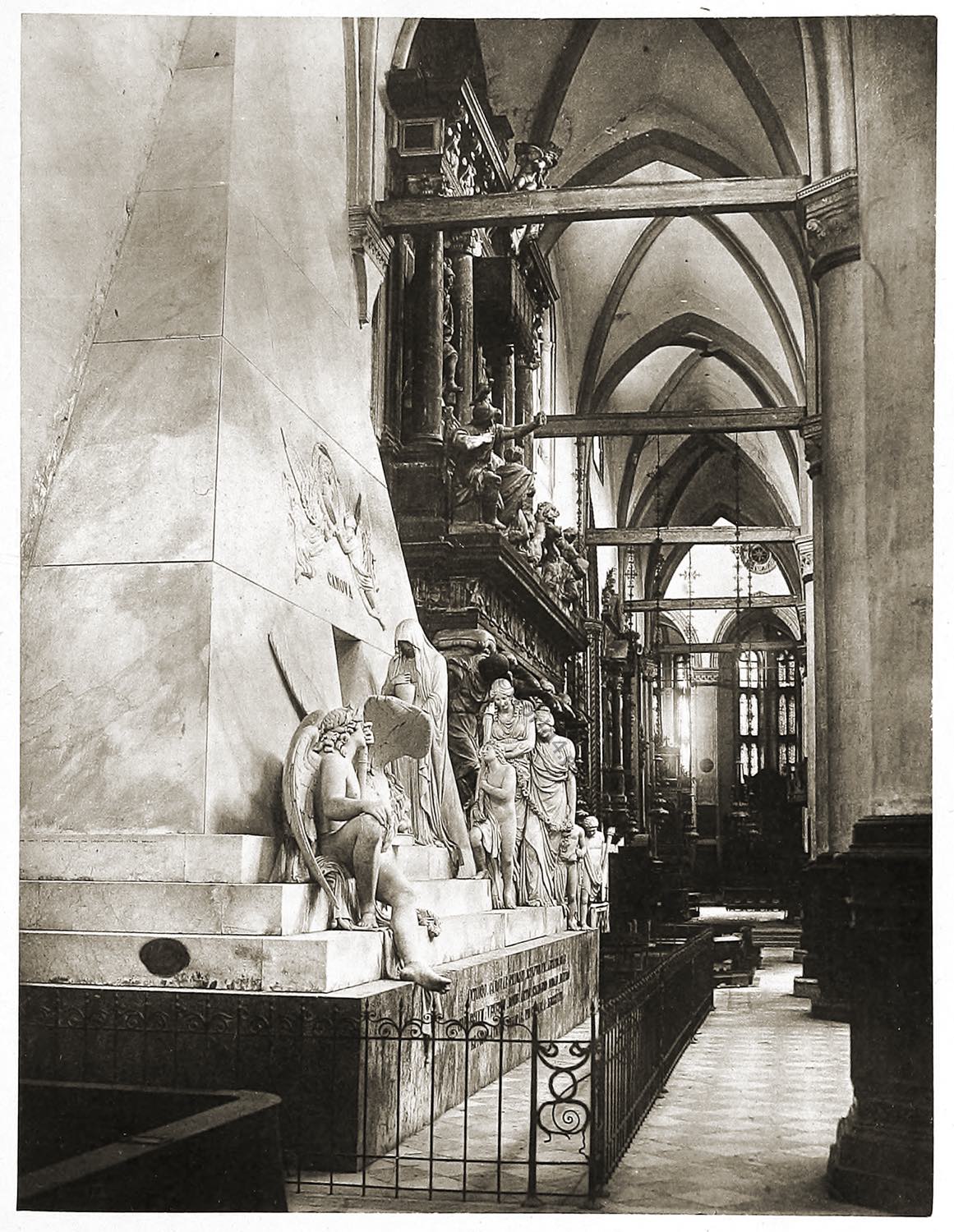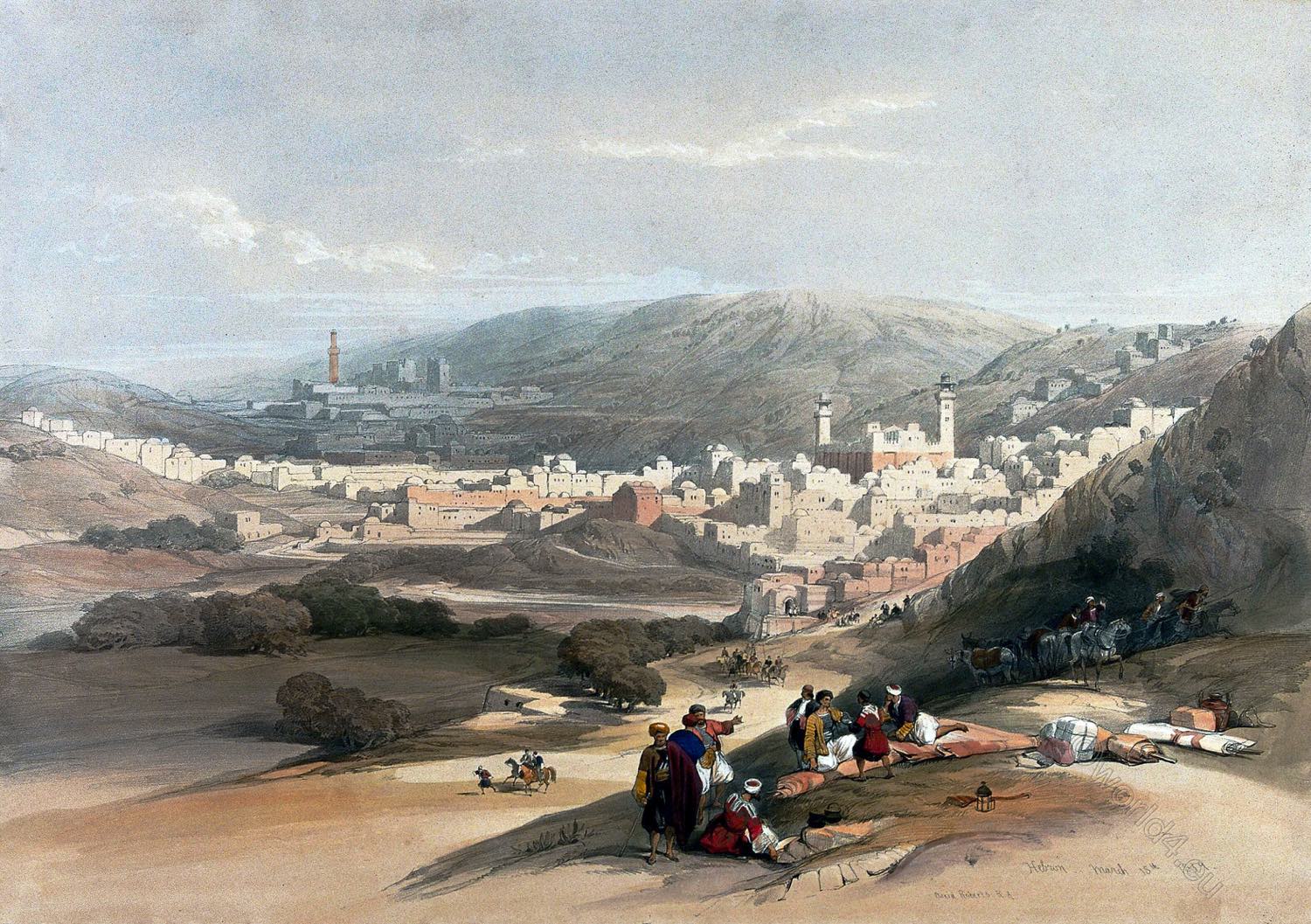THE HOLY HOUSE OF LORETO
by Arthur Penrhyn Stanley.
IN the slope of the eastern Apennines, overlooking the Adriatic gulf, stands what may be called (according to the belief of the Roman Catholic Church) the European Nazareth. Fortified as if by the bastions of a huge castle, against the approach of Saracenic pirates, a vast church, even now gorgeous with the offerings of the faithful, contains the “Santa Casa,” the “Holy House,” in which the Virgin lived, and (as is attested by the same inscription as that at Nazareth) received the Angel Gabriel. Every one knows the story of the House of Loreto.
The devotion of one-half the world, and the ridicule of the other half, has made as made us all acquainted with the strange story, written in all the languages *) of Europe round the walls of that remarkable sanctuary: how the house of Nazareth was, in the close of the Thirteenth Century, conveyed by angels, first to the heights above Fiume, at the head of the Adriatic gulf, then to the plain and lastly to the hill, of Loreto.
*) Of these numerous versions of the story, made in 1635, one is in English, one in Lowland Scotch, containing all the peculiarities of diction with which every one is so familiar from the nearly contemporary conversations of King James I, in The Fortunes of Nigel; showing clearly that at that time these two dialects of English were regarded as two dis- tinct languages, each unintelligible to the speaker of the other.
But this “wondrous flitting” of the Holy House is not the feature in its history which is most present to the pilgrims who frequent it. It is regarded by them simply as an actual fragment of the Holy Land, sacred as the very spot on which the mystery of the Incarnation was announced and begun. In proportion to the sincerity and extent of this belief is the veneration which attaches to what is undoubtedly the most frequented sanctuary of Christendom. The devotion of pilgrims even on week-days exceeds anything that is seen at any of the holy places in Palestine, if we except the Church of the Holy Sepulchre at Easter.
Before the dawn of day the worship begins. Whilst it is yet dark, the doors are opened—a few lights round the sacred spot break the gloom, and disclose the kneeling Capuchins, who have been here throughout the night. Two soldiers, sword in hand, take their place by the entrance of the “House,” to guard against all injury. One of the hundred priests who are in daily attendance immediately begins mass at the high altar of the church, the first of a hundred and twenty that are repeated daily within its precincts.
The “Santa Casa” itself is then and, from that opened and lighted, the pilgrims flock in hour till sunset, come and go in a perpetual stream. The “House” is thronged with kneeling or prostrate figures, the pavement round it is deeply worn with the passage of pilgrims, who, from the humblest peasant of the Abruzzi up to the King of Naples, crawl round it on their knees; the nave is filled with the bands of worshippers, who, having visited the sacred spot, are retiring backwards from it, as from some royal presence.
On the “Santa Casa” alone depends the sacredness of the whole locality in which it stands. Loreto—whether the name is derived from the sacred grove (Lauretum) or the lady (Loreta) under whose shelter the house is believed to have descended—had no existence before the rise of this extraordinary sanctuary. The long street with its venders of rosaries, the palace of the governor, the strong walls built by Pope Sixtus IV., are all mere appendages to the humble edifice which stands within the Church. The “Santa Casa” is spoken of by them as a living person, a corporation sole on which the whole city depends, to which the whole property far and near over the rich plain which lies spread beneath it belongs forever.
No one who has ever witnessed the devotion of the Italian people on this singular spot, can wish to speak lightly of the feelings which it inspires. But a dispassion- ate statement of the real facts of the case may not be without use. Into the general question of the story we need not enter here. It has been ably proved elsewhere, *) first, that of all the pilgrims who record their visit to Nazareth from the Fourth to the Sixteenth Century, not one alludes to any house of Joseph as standing there, or as having stood there, within human memory or record; secondly, that the records of Italy contain no mention of the House till the Fifteenth Century thirdly, that the representation of the story as it now stands, with the double or triple transplantation of the sanctuary, occurs first in a bull of Leo X., in the year 1518.
*) See an elaborate and conclusive Essay on the origin of the story of the Holy House of Loreto, which appeared in the Christian Remembrancer, April, 1855.
But it is the object of these remarks simply to confront the House as it stands at Loreto with the House as it appears at Nazareth. It has been already said that each professes to contain the exact spot of the Angelic visitation, to be the scene of a single event which can only have happened in one; each claims to be the very House of the Annunciation, and bases its claim to sanctity on that especial ground. But this is not all: even should either consent to surrender something of this peculiar sacredness, yet no one can visit both sanctuaries without perceiving that by no possibility can one be amalgamated with the other.
The House of Loreto is an edifice of thirty-six feet by seventeen; its walls, though externally cased in marble, can be seen in their original state from the inside, and these appear to be of a dark red polished stone. The west wall has one square window, through which it is said the Angel flew the east wall contains rude chimney in front of which is a mass of cemented stone, said to be the altar on which St. Peter said mass, when the Apostles, after the Ascension, turned the house into a church. On the north side is (or rather was) a door, now walled up. The monks of Loreto and of Nazareth have but a dim knowledge of the sacred localities of each other. Still, the monks of Nazareth could not be altogether ignorant of the mighty sanctuary which, under the highest authorities of their Church, professes to have once rested on the ground they now occupy. They show, therefore, to any traveller who takes the pains to inquire, the space on which the Holy House stood before its flight.
That space is a vestibule immediately in front of the sacred grotto; and an attempt is made to unite the two localities by supposing that there were openings from the house into the grotto. Without laying any stress on the obvious variation of measurements, the position of the grotto is, and must always have been incompatible with any such adjacent building as that at Loreto. Whichever way the house is supposed to abut on the rock, it is obvious that such a house as has been described, would have closed up, with blank walls, the very passages by which alone the communication could be effected. And it may be added, that there is no traditional masonry of the “Santa Casa” left at Nazareth, there is the traditional masonry close by of the so-called workshop of Joseph of an entirely different character. Whilst the former is of a kind wholly unlike anything in Palestine, the latter is, as might be expected, of the natural grey limestone of the country, of which in all times, no doubt, the houses of Nazareth were built.
It may have seemed superfluous labour to have attempted any detailed refutation of the most incredible of Ecclesiastical legends. But Loreto is so emphatically the “Holy Place” of one large branch of Christendom—its claim has been so strongly maintained by French and Italian writers of our own times—and is, moreover, so deeply connected with the alleged authority of the Papal See—that an interest attaches to it far beyond its intrinsic importance. No facts are insignificant which bring to an issue the general value of local religion—or the assumption of any particular Church to direct the conscience of the world—or the amount of liberty within such a Church left on questions which concern the faith and practice of thousands of its members.
But the legend is also curious as an illustration of the history of “Holy Places” generally. It is difficult to say how it originated—or what led to the special selection of the Adriatic gulf as the scene of such a fable ally speaking, the explanation is easy and instructive. Nazareth was taken by Sultan Khalil in 1291, when he stormed the last refuge of the Crusaders in the neighbouring city of Acre. From that time, not Nazareth only, but the whole of Palestine, was closed to the devotions of Europe. The Crusaders were expelled from Asia, and in Europe the spirit of the Crusades was extinct. But the natural longing to see the scenes of the events of the Sacred History — the superstitious craving to win for prayer the favour of consecrated localities — did not expire with the Crusades.
Can we wonder that, under such circumstances, there should have arisen the feeling, the desire, the belief, that if Mahomet could not go to the mountain, the mountain must come to Mahomet? The House of Loreto is the petrifaction, so to speak, of the “Last Sigh of the Crusades”; suggested possibly by the Holy House of St. Francis at Assisi, then first acquiring its European celebrity. It is indeed not a matter of conjecture that in Italy—the country where the passionate temperament of the people would most need such stimulants—persons in this state of mind did actually endeavour, so far as circumstances permitted, to reproduce the scenes of Palestine within their own immediate neighbourhood.
One such is the Campo Santo of Pisa — “the Holy Field,” as this is “the Holy House” literally a cargo of sacred earth from the Valley of Hinnom, carried, as is well known, not on the wings of angels, but in the ships of the Pisan Crusaders. Another example is the remarkable Church of St, Stephen’s at Bologna, within whose walls are crowded together various chapels and courts, representing not only, as in the actual Church of the Sepulchre, the several scenes of the Crucifixion, but the Trial and Passion also; and which is entitled, in a long inscription affixed to its cloister, the “Sancta Sanctorum”; nay, literally, “the Jerusalem” of Italy.
A third still more curious instance may be seen at Varallo, in the kingdom of Piedmont. Bernardino Caimo, returning from a pilgrimage to Palestine at the close of the Fifteenth Century, resolved to select the spot in Lombardy most resembling the Holy Land, in order to give his countrymen the advantage of praying at the Holy Place without undergoing the privations which he had suffered himself. Accordingly, in one of the beautiful valleys leading down from the roots of Monte Rosa, he chose (it must be confessed that the resemblance is of the slightest kind) three hills, which should represent respectively Tabor, Olivet, and Calvary; and two mountain-streams, which should in like manner personate the Kedron and Jordan, Of these the central hill. Calvary, became the “Holy Place” of Lombardy. It was frequented by S. Carlo Barromeo; under his auspices the whole mountain was studded with chapels, in which the scenes of the Passion are represented in waxen figures of the size of life; and the whole country round now sends its peasants by thousands as pilgrims to the sacred spot.
We have only to suppose these feelings existing as they naturally would exist in a more fervid state two centuries earlier, when the loss of Palestine was more keenly felt when the capture of Nazareth especially was fresh in every one’s mind—and we can easily imagine that the same tendency, which by deliberate purpose produced a second Jerusalem at Bologna and a second Palestine at Varallo, would, on the secluded shores of the Adriatic, by some peasant’s dream, or the return of some Croatian chief from the last Crusade, or the story of some Eastern voyager landing on their coasts, produce a second Nazareth at Fiume and Loreto. What, in a more poetical and ignorant age was in the case of the Holy House ascribed to the hands of angels, was actually intended by Sixtus V. to have been literally accomplished in the case of the Holy Sepulchre by a treaty with the Sublime Porte for transferring it bodily to Rome, so that Italy might then have the glory of possessing the actual sites of the conception, the birth, and the burial of our Saviour.
Historic buildings as seen and described by famous writers by Esther Singleton (1865-1930). New York: Dodd, Mead & company, 1903.
Related
Discover more from World4 Costume Culture History
Subscribe to get the latest posts sent to your email.


